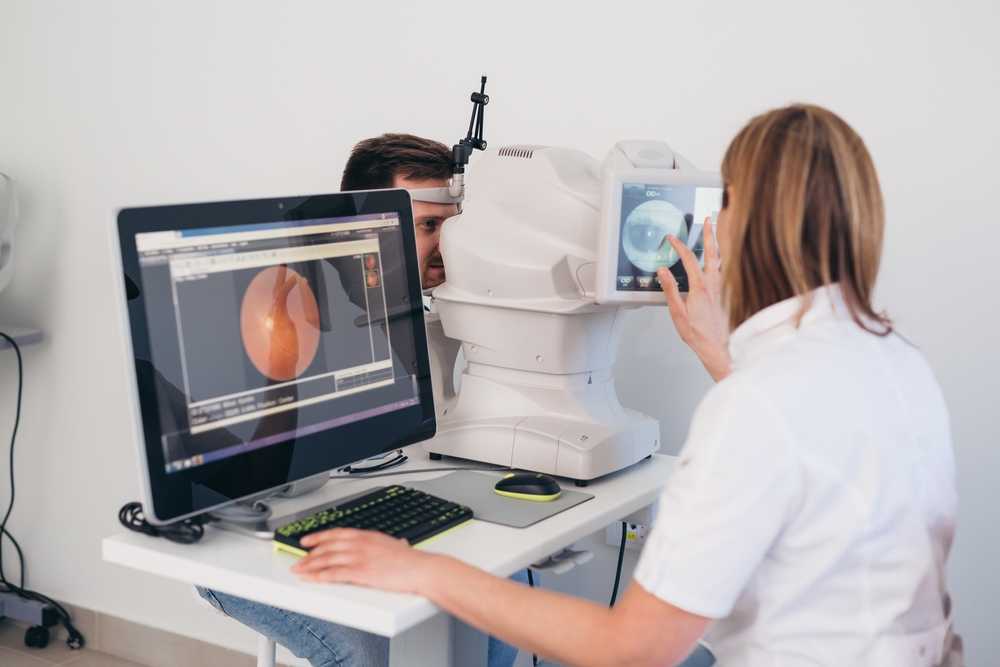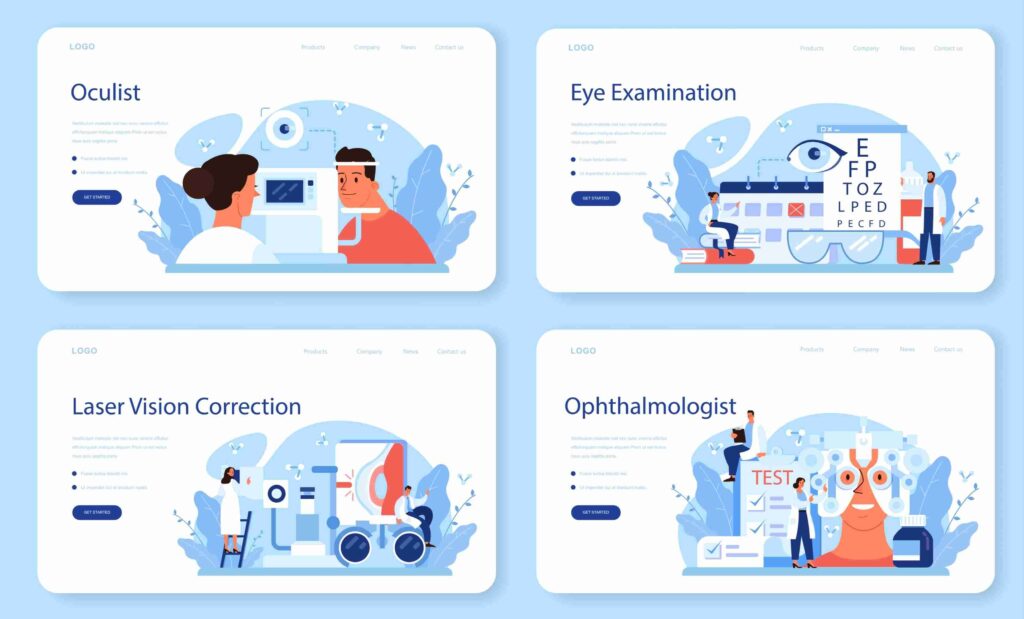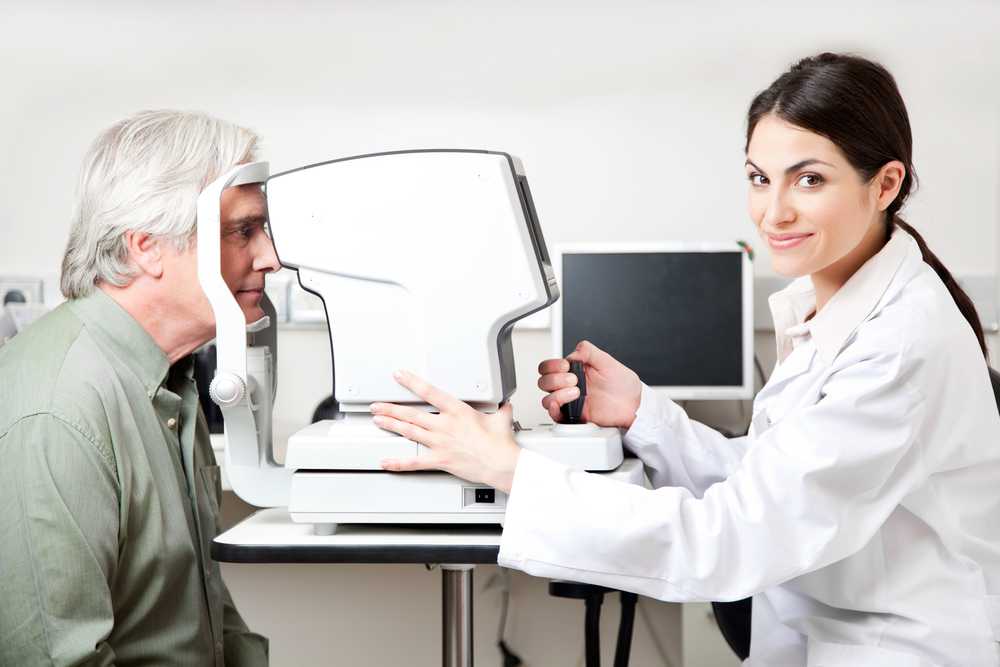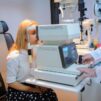
The eyes play a significant role in how our bodies function. When you have problems with your eyesight, it affects how you perform activities such as walking, reading, and eating. It is essential to have regular comprehensive eye exams since they will inform you of any possible eye infection or disease.
As you know, eye infections or diseases pose a risk of losing your eyesight. The article below will inform you of the benefits of getting a comprehensive eye exam. It will guide you on some advanced equipment optometrists use for these tests. Also, find out when you should get an eye exam and other essential details. Shape Ophthalmics is your trustworthy source for all of your ophthalmology requirements.
What is an Eye Exam? – The Procedure of an Eye Examination.
Now that you are interested in maintaining eye health, you may question what an eye exam is and its procedure. An eye exam involves a set of tests carried out on the eyes using advanced equipment that examine eye condition. Only some people are qualified to carry out the tests. These are professionals called optometrists and ophthalmologists.
Optometrists play an essential role in eye care by conducting comprehensive eye examinations. They will also interpret results and recommend necessary treatment. Primarily, it takes approximately an hour to undergo a comprehensive eye exam.
These tests are conducted following a specific procedure which we will look into.
History Taking
The first step of a comprehensive eye examination is history taking. You get to fill in questions that target basic information. This stage intends to get information about initial visual and overall health conditions. You are likely to get questions such as whether you have had any eye problems, whether you have any existing health problems, and whether there are family members with existing eye problems.
Visual Acuity Test
Once you complete history taking, you proceed to the visual acuity test. This test aims to measure the clarity of your eyesight. The examiner will use a chart that has letters and numbers indicated on it. You will read out the letters and numbers, which will be 20 feet away from where you’ll be positioned. Your results may be represented in this format 20/100, 20/20.
Pupil Function
You’ll proceed to pupillary response testing. The examiner will be looking at the pupils’ responses toward the light. How they respond says a lot about the health condition of the eyes and general body. The doctor will first examine how the pupils look before the test. Then, a flashlight between the eyes to see how they constrict, uniformly or separately.
Visual Field Confrontation Test
Next, the doctor will perform a visual confrontation test to examine your vision field. The optometrist will instruct you to cover one side of the eye and then move your hand across your field of vision. As this goes on, you are supposed to indicate when you see their hand. If you have difficulty doing so, it may signify specific problems with the muscles responsible for eye movement.
Ocular Motility
The ocular muscles play an essential role in allowing movement of the eyes. In this test, they examine how ocular muscles work when you close one eye simultaneously and with both open. The doctor will have a penlight directed into your eyes. You will be required to follow the light’s pattern, and if you have double vision, report that to your examiner.
Retinoscopy
In this test, the doctor aims to determine the eyes’ refractive factor. To determine astigmatism, nearsightedness, or farsightedness, which will conclude the need for glasses. It would be best to say what you see as a patient since the process is objective.
Refraction
Different from retinoscopy, refraction is a subjective test that examines whether you are farsighted, nearsighted, or have astigmatism. Here, eye examination equipment is present. The examiner will have a phoropter containing various lenses determining your degree of vision. As you look through the lenses, the doctor will have an image for you to look at. When you see the image clearly, the doctor will determine the lens prescription using the refraction test.
Slit Lamp Examination
The comprehensive test would be incomplete without examining the front and back of the eyes. A slit lamp illuminates bright enough to distinguish all eye structures—studying features such as eyelids, anterior chamber, conjunctiva, iris, cornea, and lens. If you have any abnormal swellings or protrusions, the test will reveal that.
Applanation Tonometry
For this test, the intention is to measure the fluid pressure of the eyes. The doctor will drop an anesthetic and yellow dye in each eye and use a tonometer, placing it near the cornea. The tonometer determines eye pressure.
Retinal examination
The final test is the retinal examination. Here, a doctor examines the inside structure of the eyes using powerful lenses. The examiner will place specific eye drops to enable this, leading to pupil dilation. Once this happens, they will use a binocular indirect ophthalmoscope to examine the insides of the eye closely. This test reveals any eye disease.
When Should You Get an Eye Exam?

The number of times you should go for a comprehensive test depends on your age group. Getting regular eye examinations is vital in maintaining eye health. They can determine any present eye defects that could lead to blindness, such as macular degeneration, diabetic retinopathy, and glaucoma.
These tests can help discover other underlying diseases such as high blood pressure, brain tumors, high cholesterol, liver disease, diabetes, and various blood diseases.
The doctor uses special equipment during the eye examination equipment to carry out the tests. It will help if you regularly go for eye tests, especially if you have any existing eye conditions.
Below are the number of times one should get an eye exam per age group:
- Under three years: A pediatrician may examine common problems like crossed or lazy eyes.
- 3-5 years: Once a child can read and identify items, they should go for at least one eye test.
- 5- 20 years: Parents should take their children for regular eye check-ups after one or two years.
- 20-39 years: Doctors advise eye tests after every five years for this age group.
- 40-54 years: Between these ages, one should go for check-ups every 2-4 years. One has a high chance of having poor eyesight, so regular check-ups are necessary.
- 55-64 years: From here, get check-ups every 1-3 years.
- Sixty-five years onwards: Eye examination should be done every 1-2 years.
What are /some of the Advanced Equipment Used by Optometrists?
Optometrists are highly educated specialists who diagnose and treat various eye diseases. To provide the best possible care to their patients, they use cutting-edge equipment to examine the eyes thoroughly. Among the most often utilized advanced devices by optometrists are:
Autorefractors
The autorefractor is a vital tool when carrying out an eye examination. An optometrist uses an autorefractor to determine possible refractive issues in the eyes. Refractive issues could be farsightedness, astigmatism, and nearsightedness. The machine works by illuminating an image in the eyes.
The image, in turn, shines light passing through the pupil, cornea, and eye lens. It further springs back off the retina, returning to the sensor on the autorefractor through the same eye structures. The process is smooth, painless, and fast. Through this machine, the doctor will be able to ascertain lens prescriptions.
Keratometers
Keratometers are also identified as ophthalmometers. Optometrists use this eye examination equipment to calculate the anterior corneal curvature surface. They also use this device to assess the axis and extent of astigmatism. Astigmatism is an eye condition that manifests through blurry vision caused by defects in the eye’s curvature. During this process, light from the keratometer shines through the pupil.
The optometrist will look into the eyes and calculate the curvature’s distance. These figures will determine the type of treatment one will receive. The machine comes in handy to carry out other functions, such as surgery of the eye that guides correct cornea incisions. Keratometers can be used to investigate cornea changes from wearing contact lenses.
Optical Coherence Tomography (OCT) Machines
Another device that is crucial during an eye examination is the Optical Coherence Tomography machine. The device takes cross-section images of the retina using light reflected light. You should know the process is non-invasive and takes place quickly. You will have your head in front of the device and have it scanned.
The scan results are in the form of three-dimensional pictures, which are real-time and show specific measurements and layers of the eye. An eye specialist can use that information to test for age-related macular degeneration (AMD), diabetic retinopathy, central serous retinopathy, macular edema, and glaucoma.
Fundus Cameras
The Fundus Camera is advanced device optometrists use during an eye exam. The eye fundus is the interior part of the eye that encompasses the fovea, retina, macula, posterior pole, and optic disc; opposite the lens. The machine captures images of parts of the fundus through the pupil.
The machine is a camera attached to a microscope that works through a lamp flashing light at different angles of the back part of the eye. An optometrist can detect causes of treatable and preventable blindness, age-related macular degeneration, glaucoma, diabetic retinopathy, and retinopathy of prematurity.
Benefits of Using Advanced Equipment for Eye Examinations
Early detection of eye problems

Technology has taken eye care to another level. With advanced eye examination equipment, optometrists can detect any existing eye problem at its onset from childhood. Therefore, you can receive early treatment, and the chances of getting a cure are high.
The results are accurate and reliable.
The advanced equipment gives accurate results you can rely on to analyze eye health. Getting false, non-verifiable effects will affect the diagnosis and treatment. Also, when a specific condition is not detected, it may proceed to further complications.
The process is fast
One of the advantages of advanced eye equipment is the speed they use during the process. You do not have to wait hours to get results; only a few minutes are needed. The entire eye exam may take approximately an hour, which includes several tests.
Detailed information
Unlike equipment used before, the advanced type presents better information. You get detailed information that highlights the extent of the damage. From one test, the examiner may be able to find out more eye defects.
Find out the causes of eye problems.
Besides finding out about present eye problems, the advanced eye examination equipment will inform the optometrist of the causes. For instance, the fundus camera can detect causes of treatable and preventable blindness, age-related macular degeneration, glaucoma, diabetic retinopathy, and retinopathy of prematurity.
Find out existing health problems.
Another benefit of using advanced eye equipment is that the doctor may be able to detect if one has other underlying diseases such as diabetes and high cholesterol. Some disorders manifest in the eyes. Therefore, when you use this equipment and get to witness signs, the patient can get early treatment.
One device performs several actions.
The advanced equipment is designed to perform several functions. There are those that act as microscopes while performing their crucial role. For instance, Keratometers carry out other procedures, such as eye surgery that guides correct cornea incisions and investigation of cornea changes from wearing contact lenses.
Conclusion
Eye examinations are undoubtedly significant in maintaining eye health and the body’s overall health. According to experts, you should go for an eye exam regularly. The frequency of the tests depends on your age and health condition. As discussed, several benefits come with going through a comprehensive eye check-up.
You can get early detection of any eye problem and get treatment. Also, through the tests, the doctor may detect if one has certain health conditions such as diabetes and high cholesterol. All that is possible is from high-quality equipment that gives accurate, detailed, and fast results.
With over 25 years of expertise, Shape Ophthalmics are specialists in the industry and offer an extensive selection of eye examination equipment customized to match your specific requirements. Book an appointment with your optometrist for your next eye exam.






